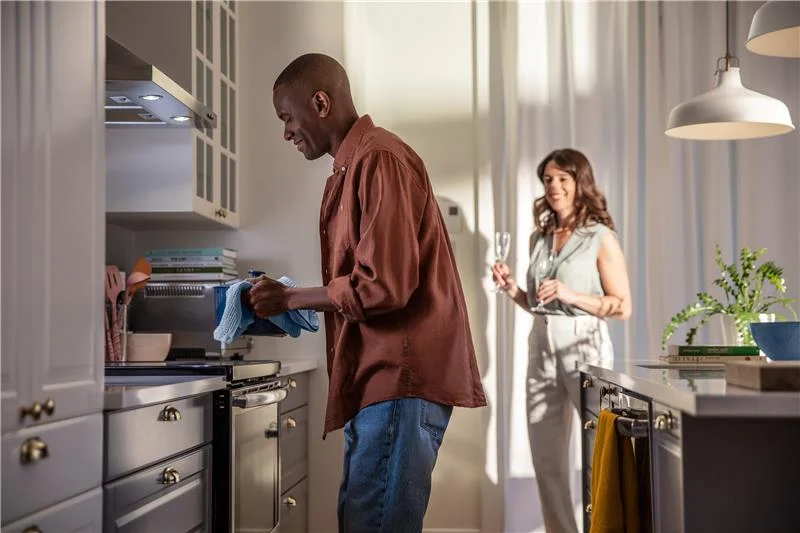Using energy more wisely in cold weather
During cold snaps, it’s important to reduce your electricity use to avoid putting more pressure on the grid. We all have a part to play in building a cleaner energy future. Hydro‑Québec has a range of offers that reward you when you reduce your electricity use when it counts the most.

Small changes make a big difference
To be energy wise during cold weather, here are a few simple things you can do during winter peak hours from 6 to 9 a.m. and from 4 to 8 p.m.:
-
Heating
Turn down the thermostat a degree or two in all rooms, especially those that are unused.
-
Hot water
Limit hot water use as much as possible.
-
Appliances
Put off running major appliances like dryers and dishwashers.
-
Electric vehicle
Shift the charging of an electric vehicle, during the night if possible.
Contribute to the collective effort and save
Hydro‑Québec has a range of offers that reward you when you reduce your electricity use during peak periods, which helps spread out power demand over time. Find out which offer works best for you: Rate Flex D or the Hilo smart home service?

Electricity demand in real time
Winter Peaks
Winter Peaks

When it’s very cold out, electricity use can increase substantially because of the need to heat our homes. Find out why it is important to reduce energy use during winter peak hours and how to make small changes.
Duration: 1 minute 19 seconds
Frequently asked questions
See for yourself: go to my Energy Performance Indicator to find your hourly, daily, monthly and annual electricity use data. You can also compare your electricity use (daily or monthly) for the past two years and see how it relates to the outdoor temperatures at the time. Since cold weather can affect your electricity use, we recommend checking this tool regulary.
Of course not. In the winter period—December to March—there are only about a hundred peak hours during which the Hydro‑Québec grid is under extra strain.
Absolutely, because your heating system uses two sources of energy: electricity and a fuel like oil, propane, natural gas or wood pellets. When it is really cold, which is when the Hydro‑Québec power grid is under the greatest pressure, the fuel is used as a source of heat instead of electricity.
Using your dual-energy heating system lowers the demand for electricity during peak periods, which are generally winter cold spells. This gives Hydro‑Québec some leeway concerning the amount of electricity it has available to meet Québec customers’ greater demand during these periods and makes it easier to balance high demand with availability.
To do your bit, all you have to do is use your dual-energy system properly by taking a few simple steps when the light indicator is on:
- Monitor your electricity consumption closely.
- Postpone or reduce your use of hot water.
- Avoid using auxiliary heating systems that run on electricity, such as convection heaters, electric fireplaces and baseboard heaters. If you can’t shut them off, turn them all the way down.
- Don’t run the washing machine, dryer, dishwasher and other appliances unless you have to.
For a better understanding of the concepts of power (or capacity) and energy, think of a restaurant.
The restaurant has a limited number of seats, let’s say 50. If 200 customers all showed up at once, the restaurant couldn’t feed them all at once, even though it has enough food on hand.
Rather than renting additional tables to meet the high but momentary demand (peak), the restaurant could ask some people to dine earlier, and some, later. That way, the restaurant would be able to serve everyone, just not all at the same time.
In the Hydro‑Québec grid, power (or capacity) is equivalent to the number of seats in the restaurant, and energy is the amount of food. Although we always have enough energy in reserve, we may not have enough capacity in peak periods. To meet the temporary demand, we have to buy power, and that’s very expensive.
Watch a video on the difference between power and energy.
on the difference between power and energy.












